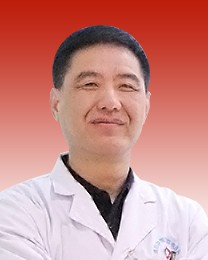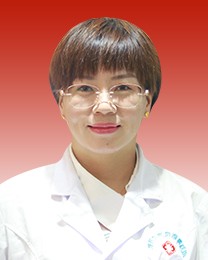贵阳强直医院论文被第五届全球华人肾脏病学术收录
由全球华人肾脏病学会(IACN)、香港肾科学会(HKSN)联合举办的第五届全球华人肾脏病学术大会暨香港肾科学会周年学术会议2024(ICCN)将于2024年12月13-15日在香港会议展览中心(HKCEC)举行。本次大会将全方位展示肾脏病学领域新的临床实践与科研成果,深入探讨并分析肾脏病学科的难点与热点问题。
由我院邓焱明主任所撰写的论文《Advancements in the research of intestinal microbiota-mitochondria crosstalk on diabetic nephropathy and the intervention of traditional Chinese medicine》(肠道菌群-线粒体串扰对糖尿病肾病的影响及中医药干预研究进展)已被大会官方收录,将以海报形式在会议现场展出。
论文具体内容
(标题)
Advancements in the research of intestinal microbiota-mitochondria crosstalk on diabetic nephropathy and the intervention of traditional Chinese medicine肠道菌群-线粒体串扰对糖尿病肾病的影响及中医药干预研究进展
(正文)Background: Diabetic Nephropathy (DN) has become the leading cause of end-stage renal disease (ESRD) worldwide. Recent studies have shown that the pathogenesis of DN is closely related to intestinal microbiome disorders and mitochondrial dysfunction. The endosymbiosis theory finds that human mitochondria have microbial origins and share similar biological features with the gut microbiome. Therefore, the crosstalk between gut microbiome and mitochondria is important for the development and progression of DN. Traditional Chinese medicine (TCM) has great potential in the treatment of a variety of diseases, and clinical studies have demonstrated that TCM prescriptions have remarkable efficacy in treating DN. However, the effect of TCM on DN through the gut microbiota-mitochondrial axis is not fully understood.
背景:糖尿病肾病(Diabetic Nephropathy, DN)已成为全球终末期肾病(end-stage renal disease, ESRD)的主要原因。近年来的研究表明,DN的发病机制与肠道菌群紊乱和线粒体功能障碍密切相关。内共生理论发现,人类线粒体具有微生物来源,并与肠道菌群具有相似的生物学特征。因此,肠道菌群与线粒体之间的相互作用对DN的发生发展具有重要意义。中医药在多种疾病的治疗中具有巨大潜力,临床研究表明,中医方剂治疗DN疗效显著。然而,中药通过肠道菌群和线粒体轴对DN的影响尚不完全清楚。
Method: This article summarizes recent studies and elaborates the research progress of traditional Chinese medicine in the treatment of diabetic nephropathy by interfering with intestinal flora and mitochondria.
方法:总结近年来的研究,阐述中医药通过干扰肠道菌群和线粒体治疗糖尿病肾病的研究进展。
Result: Studies have shown that metabolic abnormalities are one of the initial factors in the development of DN. The main metabolites of intestinal microorganisms include SCFAs, trimethylamine N-oxide (TMAO), bile acids (BAs), indoxyl sulfate (IS), hydrogen sulfide (H2S), etc. SCFAs protects the kidneys by binding to G-protein-coupled receptors or inhibiting histone deacetylases to regulate the renin-angiotensin system, inflammatory response, oxidative stress, and autophagy. TMAO plays a role in controlling lipid metabolism and glucose balance. BAs regulates metabolism mainly through nuclear farnesoid X receptor (FXR) and G protein-coupled receptor 5 (TGR5). These metabolites play different roles in DN by regulating receptor expression and activating transcription factors to regulate the barrier function of intestinal epithelium. The pathogenesis of DN is closely related to four types of mitochondrial damage, including abnormal mitochondrial biosynthesis, mitochondrial dynamic imbalance, mitochondrial dysfunction and mitochondrial autophagy disorder. In conclusion, the gut microbiota-mitochondrial axis plays an important role in the development of DN. SCFAs have been demonstrated to induce mitochondria genesis by activating AMP kinase. TCM can treat RA by improving gut microbiota structure, adjusting T lymphocytes in the intestine, regulating microbiota metabolites, affecting intestinal immunity and intestinal barrier function, and improving intestinal dysfunction. The effects of Chinese medicine and its active ingredients on mitochondria are as follows: 1) Improving mitochondrial biosynthesis by influencing PGC-1α, NRF-1, NRF-2 and TFAM. 2) enhancing SOD activity and inhibiting oxidative stress. Reduce ROS damage. 3) regulate mitochondrial energy metabolism to maintain kinetic homeostasis. 4) stabilize mitochondrial membrane fluidity to maintain mitochondrial structure and morphology. 5) regulate apoptotic pathways to reduce the release of pro-apoptotic factors.
结果:研究表明,代谢异常是DN发生发展的始动因素之一。肠道微生物的主要代谢产物包括SCFAs、三甲胺n -氧化物(TMAO)、胆汁酸(BAs)、硫酸吲哚酚(IS)、硫化氢(H2S)等。SCFAs通过与g蛋白偶联受体结合或抑制组蛋白去乙酰化酶来调节肾素-血管紧张素系统、炎症反应、氧化应激和自噬,从而保护肾脏。TMAO具有控制脂代谢和糖平衡的作用。BAs主要通过核法尼醇X受体(FXR)和G蛋白偶联受体5 (TGR5)调节代谢。这些代谢物通过调节受体表达和激活转录因子来调节肠上皮屏障功能,在DN中发挥不同的作用。DN的发病机制与线粒体生物合成异常、线粒体动态失衡、线粒体功能障碍和线粒体自噬障碍4种线粒体损伤密切相关。综上所述,肠道菌群-线粒体轴在DN的发生发展中起重要作用。SCFAs已被证明通过激活AMP激酶来诱导线粒体发生。中药可通过改善肠道菌群结构,调节肠道T淋巴细胞,调节菌群代谢产物,影响肠道免疫和肠屏障功能,改善肠道功能障碍,从而治疗RA。中药及其活性成分对线粒体的作用主要包括:1)通过影响PGC-1α、NRF-1、NRF-2和TFAM改善线粒体的生物合成。2)增强SOD活性,抑制氧化应激。减少ROS损伤。3)调节线粒体能量代谢,维持动力学稳态。4)稳定线粒体膜流动性,维持线粒体结构和形态。5)调节凋亡通路,减少促凋亡因子的释放。
Conclusion: Traditional Chinese medicine has unique advantages in the treatment of DN. This paper explores the mechanism of intestinal microbiota-mitochondrial axis in the progression of DN and the intervention pathway of traditional Chinese medicine, which is helpful to develop potential treatment strategies for DN.
结论:中医药治疗DN具有独特优势。本文探讨肠道菌群-线粒体轴在DN进展中的作用机制及中药干预途径,有助于开发潜在的DN治疗策略。
面向未来,我院将不断加强学术交流,积极应对痛风性肾病领域中所面临的重大科学挑战和临床诊疗难题。坚守本心,致力于为病人谋福祉,帮助更多痛风风湿免疫病患者摆脱疾病困境,享受健康人生。
【申明:本文由第三方发布,内容仅代表作者本人的观点,与本站无关。本站仅提供网络技术支持服务,对文章的原创性及内容真实性不做任何保证或承诺,请读者仅作参考,并自行核实相关内容。如因作品内容、知识产权和其他问题需与本网联系的,请发邮件至fw@familydoctor.com.cn,我们将会定期收集意见并促进解决。】
推荐专家
更多>医院资讯
科普文章
健康科普
更多>-
再获国际认可!贵阳强直医院研究论文入选第27届亚太风湿病协会联盟大会(APLAR 2025)
2025-08-20 16:18:41 -
贵阳强直医院风湿免疫科官献军主任撰写的研究论文《Advances in Diagnosti... [详情]
-
“全国痛风一张网·贵阳痛风基地” 在贵阳强直医院正式启动
2025-08-19 16:23:42 -
为积极响应《健康中国行动(2019-2030年)》,构建痛风防治体系,提升区域诊疗能力,2... [详情]
-
“全国痛风一张网·贵阳痛风基地” 在贵阳强直医院正式启动
2025-08-12 10:04:42 -
为积极响应《健康中国行动(2019-2030年)》,构建痛风防治体系,提升区域诊疗能力,2... [详情]
-
“全国痛风一张网·贵阳痛风基地” 在贵阳强直医院正式启动
2025-08-11 15:17:59 -
为积极响应《健康中国行动(2019-2030年)》,构建痛风防治体系,提升区域诊疗能力,2... [详情]
-
本周末北京专家在贵阳强直医院会诊,预约即享<北京三甲专家亲诊+多项惠民补贴>
2024-12-04 13:21:16 -
本周末北京专家在贵阳强直医院会诊,预约即享 随着冬季的降临,气温急剧下滑,痛风风湿病患者若... [详情]


